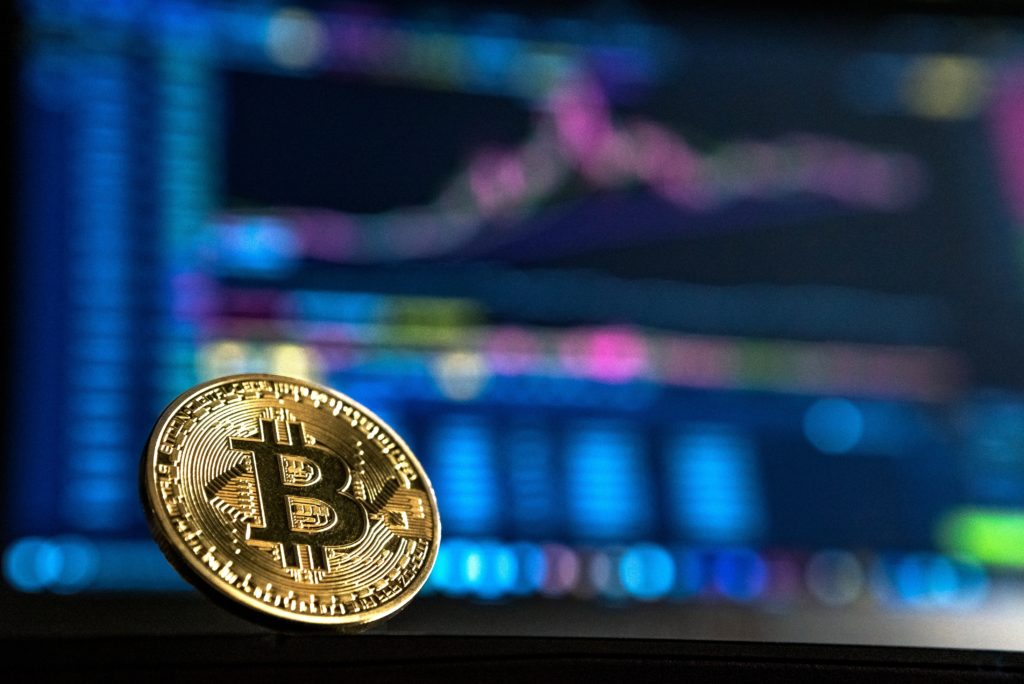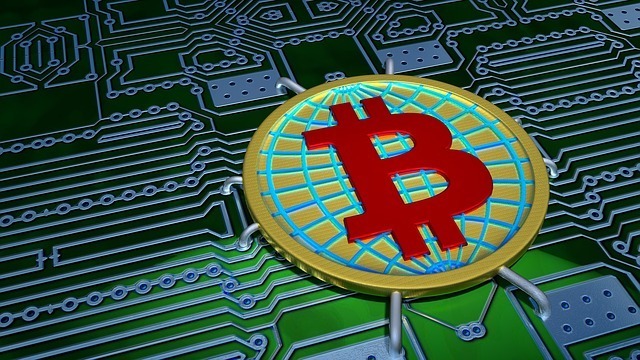Bitcoin Theory: Where Bitcoin And The Metaverse Meet
Bitcoin is a digital currency that was created in 2009 by an anonymous person or group of people using the pseudonym Satoshi Nakamoto. It is the first decentralized cryptocurrency, meaning it operates without a central authority, such as a government or financial institution. Bitcoin operates on a technology called blockchain, which is a distributed ledger that records all transactions across a network of computers.
At its core, Bitcoin is a peer-to-peer electronic cash system. It allows users to send and receive payments directly without the need for intermediaries like banks. Transactions are verified by network nodes through cryptography and recorded on the blockchain. This decentralized and transparent nature of Bitcoin makes it resistant to censorship and manipulation.
One of the key features of Bitcoin is its limited supply. There will only ever be 21 million bitcoins in existence, which gives it scarcity and helps protect against inflation. New bitcoins are created through a process called mining. Miners use powerful computers to solve complex mathematical problems, and when they successfully solve a problem, they are rewarded with newly minted bitcoins. This process also verifies and secures the transactions on the network.
Bitcoin transactions are pseudonymous, meaning that while the transaction details are recorded on the blockchain, the identities of the participants are not directly revealed. Instead, each user has a unique cryptographic address associated with their Bitcoin wallet. This address is a long string of characters that can be used to send or receive bitcoins.
To access and manage bitcoins, users need a digital wallet, which can be software-based or hardware-based. Wallets store the user’s private keys, which are necessary to sign transactions and prove ownership of the bitcoins. It’s crucial for users to keep their private keys secure and back them up to avoid the risk of losing access to their bitcoins.
Bitcoin has gained significant attention and popularity over the years due to several reasons. First, it offers a decentralized alternative to traditional banking systems, giving users more control over their money and the ability to transact globally without the need for intermediaries. Second, Bitcoin has the potential to serve as a hedge against traditional financial systems and fiat currencies that may be subject to inflation or economic instability. Third, it has opened up opportunities for financial inclusion in regions with limited access to traditional banking services.
However, it’s important to note that Bitcoin also faces challenges and criticisms. Its decentralized nature has raised concerns about its potential use in illegal activities, such as money laundering and black market transactions. Additionally, the volatility of its price has led to speculation and investment risks. The scalability of the Bitcoin network has also been a topic of debate, as it can currently handle a limited number of transactions per second, leading to delays and higher fees during peak periods.
Despite these challenges, Bitcoin has had a significant impact on the financial world and has inspired the development of thousands of other cryptocurrencies, collectively known as altcoins. It has sparked discussions about the future of money, blockchain technology, and the potential for decentralized systems to revolutionize various industries beyond finance.
It’s worth noting that while this information provides a comprehensive overview of Bitcoin, the cryptocurrency landscape is constantly evolving, and new developments may have occurred since my knowledge cutoff in September 2021.
Also read: The Birth Of Crypto: How Bitcoin Signalled The Start Of An All New FinTech World
How bitcoin is related to Metaverse?
Bitcoin and the concept of the Metaverse are two distinct but interconnected phenomena. While Bitcoin is a decentralized digital currency, the Metaverse refers to a virtual universe where people can interact, work, and engage in various activities using virtual reality (VR) or augmented reality (AR) technologies. Let’s explore the relationship between Bitcoin and the Metaverse in more detail.
1. Digital Currency in the Metaverse:
As the Metaverse evolves, there is a growing need for a digital currency that can facilitate transactions within this virtual realm. Bitcoin, with its decentralized nature, security features, and global acceptance, has the potential to serve as a universal currency in the Metaverse. It can enable seamless and secure transactions between users, allowing them to buy virtual assets, services, and experiences within the virtual world.
2. Tokenization of Virtual Assets:
The concept of tokenization is closely related to both Bitcoin and the Metaverse. Tokenization refers to the representation of real-world or virtual assets as digital tokens on a blockchain. In the Metaverse, various virtual assets such as virtual land, virtual goods, digital art, and even virtual identities can be tokenized and traded using blockchain technology. Bitcoin’s blockchain can provide a secure and transparent platform for tokenizing and trading these virtual assets, ensuring ownership, provenance, and authenticity.
3. Decentralization and User Control:
Both Bitcoin and the Metaverse share the principles of decentralization and user control. Bitcoin operates without a central authority, allowing users to have direct control over their funds and transactions. Similarly, the Metaverse aims to provide users with autonomy and control over their virtual presence, digital assets, and interactions within the virtual world. By integrating Bitcoin into the Metaverse, users can maintain the same level of financial sovereignty and control they have in the real world.
4. Cross-Platform Interoperability:
The interoperability between different platforms and virtual worlds within the Metaverse is a crucial aspect for its development and widespread adoption. Bitcoin’s underlying blockchain technology can facilitate cross-platform interoperability by providing a common protocol for value exchange. This means that users can seamlessly transfer their Bitcoin holdings between different virtual worlds, allowing for fluid movement of assets and value across the Metaverse.
5. Digital Identity and Reputation:
Digital identity and reputation systems are vital components of the Metaverse, as they enable users to establish and maintain their virtual presence and credibility. Bitcoin’s blockchain can be leveraged to create decentralized identity systems, where users can have unique cryptographic identities associated with their Bitcoin wallets. These identities can serve as a foundation for building reputation systems within the Metaverse, where users’ track records and interactions are recorded on the blockchain, providing transparency and trust.
6. Funding and Crowdfunding:
Bitcoin has also played a significant role in funding projects and initiatives related to the Metaverse. The decentralized and borderless nature of Bitcoin allows creators and developers from around the world to access funding without relying on traditional financial institutions. Through crowdfunding campaigns and initial coin offerings (ICOs), Bitcoin has enabled the financial support of Metaverse-related projects, such as virtual reality platforms, blockchain-based games, and virtual world infrastructure.
In summary, Bitcoin and the Metaverse are interconnected through various aspects, including serving as a digital currency within the virtual world, tokenization of virtual assets, decentralization, cross-platform interoperability, digital identity, reputation systems, and funding opportunities. As the Metaverse continues to evolve, Bitcoin’s underlying technology and principles can play a significant role in shaping the financial infrastructure and user experience within this immersive virtual realm.
Importance of Bitcoin in Metaverse
Bitcoin holds significant importance in the development and functioning of the Metaverse. Here are several key aspects highlighting its importance:
1. Universal Digital Currency: Bitcoin can serve as a universal digital currency within the Metaverse. Its decentralized nature, global acceptance, and widespread adoption make it an ideal medium of exchange for virtual assets, services, and experiences across different virtual worlds and platforms. By using Bitcoin as a common currency, users can seamlessly transact and engage in economic activities within the Metaverse, regardless of geographical boundaries or specific platform limitations.
2. Financial Sovereignty and Control: Bitcoin’s decentralized nature empowers users with financial sovereignty and control over their virtual assets and transactions in the Metaverse. Traditional financial systems often involve intermediaries and restrictions, limiting users’ control over their funds. By integrating Bitcoin into the Metaverse, users can maintain the same level of ownership and control they have in the real world, enabling a more open and user-centric financial ecosystem.
3. Security and Trust: Bitcoin’s underlying blockchain technology provides a robust and secure infrastructure for transactions and asset ownership within the Metaverse. The blockchain’s decentralized and immutable nature ensures transparent and tamper-proof record-keeping, which enhances security and builds trust among users. This feature is crucial in the Metaverse, where digital assets hold significant value, and users need assurance that their transactions and ownership rights are secure.
4. Interoperability and Portability: The Metaverse consists of multiple virtual worlds and platforms, each with its own set of rules, currencies, and economies. Bitcoin’s interoperability can enable seamless value transfer and asset portability between these different virtual environments. By integrating Bitcoin’s blockchain, users can easily move their digital assets, virtual currencies, and other value representations between platforms, fostering a more connected and fluid Metaverse experience.
5. Tokenization and Ownership: Bitcoin’s blockchain can facilitate the tokenization of virtual assets within the Metaverse. Through this process, real-world and virtual assets can be represented as digital tokens on the blockchain, enabling verifiable ownership, provenance, and transferability. This tokenization feature enhances the liquidity and tradability of virtual assets, enabling users to buy, sell, and trade virtual goods, virtual land, digital art, and more within the Metaverse.
6. Decentralized Identity and Reputation: Bitcoin’s blockchain technology can support decentralized identity and reputation systems within the Metaverse. By associating unique cryptographic identities with Bitcoin wallets, users can establish their virtual presence and build reputations based on their interactions and activities. This decentralized approach enhances privacy, security, and transparency, allowing users to maintain control over their digital identities and reputations in the virtual realm.
7. Funding and Innovation: Bitcoin’s decentralized nature has revolutionized fundraising and investment opportunities, and this extends to the development of the Metaverse. Bitcoin’s ecosystem enables crowdfunding campaigns, initial coin offerings (ICOs), and other innovative funding models for Metaverse-related projects. These funds can support the creation of virtual reality platforms, blockchain-based games, infrastructure development, and other initiatives driving the growth of the Metaverse.
In conclusion, Bitcoin’s importance in the Metaverse lies in its ability to provide a universal digital currency, ensure financial sovereignty and control, enhance security and trust, enable interoperability and portability, support tokenization and ownership, facilitate decentralized identity and reputation systems, and fuel funding and innovation. By leveraging Bitcoin’s features and integrating it into the Metaverse, users can experience a more inclusive, seamless, and vibrant virtual world ecosystem.
Also read: Top 10 Ways Bitcoin Changed The Way We Think About Digital Assets
Top 10 Features of Bitcoin in Metaverse
The metaverse is a virtual world that is becoming increasingly popular, and Bitcoin is playing a major role in its development. Here are 10 features of Bitcoin that are making it a valuable asset in the metaverse:
- Scarcity: Bitcoin is a scarce asset, with a limited supply of 21 million coins. This makes it a valuable store of value in the metaverse, where digital goods and services are becoming increasingly popular.

- Divisibility: Bitcoin is divisible up to eight decimal places, making it a convenient way to buy and sell digital goods and services.

- Portability: Bitcoin can be stored in digital wallets, making it easily transportable between different metaverse platforms.

- Security: Bitcoin is a secure asset, protected by cryptography and the blockchain network. This makes it a safe way to store and transfer value in the metaverse.
- Transparency: All Bitcoin transactions are recorded on the blockchain, which is a public ledger. This makes Bitcoin a transparent asset, with all transactions easily verifiable.
- Immutability: Once a Bitcoin transaction is recorded on the blockchain, it cannot be changed. This makes Bitcoin an immutable asset, with a tamper-proof record of ownership.

- Programmable: Bitcoin is a programmable asset, which means that it can be used to create smart contracts. This makes Bitcoin a valuable tool for developing decentralized applications in the metaverse.

- Decentralized: Bitcoin is a decentralized asset, which means that it is not subject to government or financial institution control. This makes Bitcoin a valuable asset for users who want to maintain control of their own finances.
- Global: Bitcoin is a global asset, which means that it can be used by people all over the world. This makes Bitcoin a valuable asset for users who want to transact with people in other countries.
- Future-proof: Bitcoin is a future-proof asset, which means that it is well-positioned to adapt to the changing needs of the metaverse. This makes Bitcoin a valuable asset for users who want to invest in the future of the metaverse.
These are just a few of the features of Bitcoin that are making it a valuable asset in the metaverse. As the metaverse continues to grow, Bitcoin is likely to play an even greater role in this new virtual world.
Risks associated with bitcoin in Metaverse
While Bitcoin offers numerous benefits in the context of the Metaverse, there are also risks and challenges that should be considered. Here are some key risks associated with Bitcoin in the Metaverse:
1. Volatility: Bitcoin is known for its price volatility, which can pose risks within the Metaverse. Fluctuations in the value of Bitcoin can impact the pricing and valuation of virtual assets and services within the virtual world. For example, if a user purchases virtual land or goods with Bitcoin and the value of Bitcoin decreases significantly, the user may experience a loss in the purchasing power of their virtual assets.
2. Scalability and Transaction Speed: Bitcoin’s current scalability limitations can result in delays and higher transaction fees during peak periods. In the fast-paced environment of the Metaverse, where quick transactions and responsiveness are crucial, the limitations of the Bitcoin network may hinder smooth and efficient user experiences. Scaling solutions, such as layer-2 protocols or off-chain solutions, are being developed to address these issues, but their widespread adoption and effectiveness are yet to be fully realized.
3. Security Vulnerabilities: While Bitcoin’s blockchain technology offers robust security, vulnerabilities can still exist in other parts of the Bitcoin ecosystem. Users may face risks associated with wallet security, such as the potential for hacks, phishing attacks, or loss of access to their Bitcoin holdings. It’s important for users to prioritize security measures, such as using reputable wallets, implementing two-factor authentication, and safeguarding private keys, to mitigate these risks.
4. Regulatory and Legal Uncertainty: Bitcoin’s regulatory status varies across different jurisdictions. The evolving regulatory landscape and lack of uniformity in regulations can introduce uncertainty and potential legal risks within the Metaverse. Users and businesses operating within the Metaverse must navigate the legal and compliance requirements related to Bitcoin, including taxation, money laundering, and consumer protection laws.
5. Privacy Concerns: While Bitcoin transactions are pseudonymous, meaning the identities of the participants are not directly revealed, the transparency of the blockchain can still lead to potential privacy concerns within the Metaverse. Users’ transaction history and holdings can be tracked and analyzed on the blockchain, raising concerns about surveillance, profiling, or the loss of personal financial privacy within the virtual world.
6. User Error and Irreversibility: Bitcoin transactions are irreversible once confirmed on the blockchain. If a user makes an error, such as sending Bitcoin to the wrong address or falling victim to scams, it can be challenging or impossible to recover the funds. Within the Metaverse, where transactions may involve complex smart contracts or interactions with multiple parties, the risk of user error and irreversible transactions is heightened.
7. Adoption and Usability: Despite Bitcoin’s growing popularity, it still faces challenges in terms of mainstream adoption and usability. The complexity of managing wallets, private keys, and transaction processes may present barriers to entry for new users in the Metaverse. Additionally, the learning curve associated with Bitcoin’s technology and the need for technical literacy may limit its accessibility to a broader audience within the virtual world.
It’s essential for users and participants in the Metaverse to be aware of these risks and take appropriate measures to mitigate them. This includes staying informed about security best practices, understanding the regulatory landscape, diversifying investments, and exercising caution when engaging in financial transactions within the Metaverse. As the technology and ecosystem surrounding Bitcoin and the Metaverse continue to evolve, it’s crucial to monitor developments and adapt accordingly to mitigate potential risks.
Future of Bitcoin in Metaverse
The future of Bitcoin in the Metaverse holds considerable potential as both concepts continue to evolve and gain traction. Here are some key aspects that highlight the potential future developments and possibilities:
1. Mainstream Adoption: As the Metaverse concept becomes more widely recognized and embraced, Bitcoin’s integration as a universal digital currency within the virtual world could accelerate. Increased adoption of Bitcoin as a medium of exchange would enhance the liquidity, usability, and acceptance of virtual assets, services, and experiences across different virtual worlds and platforms.
2. Interoperability and Seamless Experiences: Bitcoin’s blockchain technology could enable greater interoperability between various virtual worlds and platforms within the Metaverse. This would allow users to seamlessly move their virtual assets, currencies, and identities between different virtual environments, providing a more fluid and connected user experience. The integration of Bitcoin could potentially create a unified economic framework across the Metaverse.
3. Enhanced Tokenization and Ownership: Bitcoin’s blockchain can facilitate advanced tokenization capabilities within the Metaverse. Virtual assets, including virtual land, digital art, virtual goods, and even virtual identities, can be represented as unique digital tokens on the Bitcoin blockchain. This tokenization would enable verifiable ownership, provenance, and transferability of virtual assets, fostering a thriving market for digital goods and services.
4. Decentralized Identity and Reputation Systems: Bitcoin’s blockchain technology can support decentralized identity and reputation systems within the Metaverse. Users can establish unique cryptographic identities associated with their Bitcoin wallets, allowing them to maintain control over their virtual presence and interactions. Decentralized reputation systems built on Bitcoin’s blockchain could provide transparent and trustworthy mechanisms to assess users’ credibility and reliability within the virtual world.
5. Integration of Smart Contracts and Programmable Money: Bitcoin’s blockchain can potentially integrate smart contract functionality and programmable money within the Metaverse. Smart contracts would enable automated and self-executing agreements between users, while programmable money would allow for conditional payments and advanced financial interactions. These features could open up new possibilities for complex virtual economies, decentralized applications, and innovative business models within the Metaverse.
6. Enhanced Security and Privacy Measures: Bitcoin’s underlying technology provides a secure and transparent infrastructure that could contribute to enhanced security and privacy measures within the Metaverse. As the virtual world becomes more intricate and valuable, leveraging Bitcoin’s decentralized and immutable nature could ensure secure transactions, protect digital assets, and enhance user privacy and control over personal data.
7. Integration of Layer-2 Solutions: The implementation of layer-2 scaling solutions, such as the Lightning Network, could address Bitcoin’s scalability challenges within the Metaverse. These solutions would allow for faster and more cost-effective transactions, enabling seamless microtransactions, real-time interactions, and a smoother user experience within the virtual world.
8. Convergence with Virtual Reality (VR) and Augmented Reality (AR): As Bitcoin evolves in the Metaverse, the integration with VR and AR technologies could further enhance user immersion and engagement. Bitcoin-enabled virtual reality experiences, virtual asset marketplaces, and interactive augmented reality applications could become commonplace, creating a more immersive and interactive Metaverse environment.
It’s important to note that the future of Bitcoin in the Metaverse is subject to various factors, including technological advancements, regulatory frameworks, market dynamics, and user adoption. As both Bitcoin and the Metaverse continue to develop and evolve, it’s crucial to closely monitor emerging trends, innovations, and community-driven initiatives to fully grasp the potential of Bitcoin’s integration within the virtual realm.
Also read: Bitcoin And The Future Of Money – How Bitcoin Changed The Way We Think About Money
Stay informed with daily updates from Blockchain Magazine on Google News. Click here to follow us and mark as favorite: [Blockchain Magazine on Google News].
Get Blockchain Insights In Inbox
Stay ahead of the curve with expert analysis and market updates.
latest from tech
Disclaimer: Any post shared by a third-party agency are sponsored and Blockchain Magazine has no views on any such posts. The views and opinions expressed in this post are those of the clients and do not necessarily reflect the official policy or position of Blockchain Magazine. The information provided in this post is for informational purposes only and should not be considered as financial, investment, or professional advice. Blockchain Magazine does not endorse or promote any specific products, services, or companies mentioned in this posts. Readers are encouraged to conduct their own research and consult with a qualified professional before making any financial decisions. The featured image used is just a creative depiction of the title and it does not intend to hurt sentiments of any person or institution. If it hurts anyone sentiments, please do not hesitate to reach out to Blockchain Magazine.

 Bitcoin
Bitcoin  Ethereum
Ethereum  XRP
XRP  Tether
Tether  Solana
Solana  Dogecoin
Dogecoin  USDC
USDC  Cardano
Cardano  Lido Staked Ether
Lido Staked Ether  TRON
TRON  Chainlink
Chainlink  Avalanche
Avalanche  Sui
Sui  Wrapped stETH
Wrapped stETH  Wrapped Bitcoin
Wrapped Bitcoin  Stellar
Stellar  Toncoin
Toncoin  Hedera
Hedera  Shiba Inu
Shiba Inu  Polkadot
Polkadot  WETH
WETH  LEO Token
LEO Token  Litecoin
Litecoin  Bitcoin Cash
Bitcoin Cash  Bitget Token
Bitget Token  Hyperliquid
Hyperliquid  Uniswap
Uniswap  Official Trump
Official Trump  Wrapped eETH
Wrapped eETH  Pepe
Pepe  USDS
USDS  NEAR Protocol
NEAR Protocol  Ethena USDe
Ethena USDe  Aave
Aave  Aptos
Aptos  Internet Computer
Internet Computer  Ondo
Ondo  WhiteBIT Coin
WhiteBIT Coin  Ethereum Classic
Ethereum Classic  Monero
Monero  Mantle
Mantle  Cronos
Cronos  POL (ex-MATIC)
POL (ex-MATIC)  Render
Render  Dai
Dai  Algorand
Algorand  MANTRA
MANTRA  OKB
OKB 




